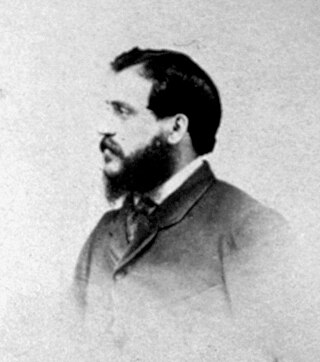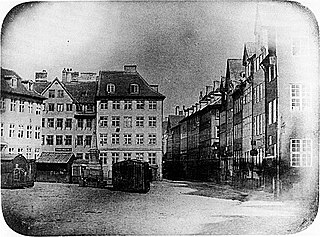Further reading
- Terry Bennett, Korea Caught In Time, Garnet Publishing, 1997.
| | This photography-related article is a stub. You can help Wikipedia by expanding it. |
The practice of photography in Korea was delayed until the late 19th century, because of the Joseon Dynasty's policy forbidding contact with foreigners.
First, a few foreign photographers, such as Felix Beato, took photographs in Korea or of Korean people outside of Korea in the 1860s and 1870s.
In the late 19th century, some Korean photographers appeared. Kim Yong-Won, who was the first professional photographer in Korea, opened a photo studio in 1883. In 1884, Ji Un-Young and Hwang Chul opened studios. But the activities of these studios did not lead to the spread of photography in Korea.
In 1910, Japan colonised Korea and after that, Japanese photographers became very active in Korea. On the other hand, Kyong-sung Photographers' Association (京城写真師会) was founded in 1926. Further, during the 1930s, many Korean amateur photographers appeared, setting up "70 amateur photography clubs with up to 1000 members."[ citation needed ] The Japanese government restricted Korean photographers' activities during World War II.
After World War II, the amateur photographers' group Chosun Photo Art Study Group (Choson Sajin Yesul Yonguhui) was formed in 1945. Art photography was the dominant tendency among amateur photographers during this period.
In the 1960s after the Korean War, photojournalism and commercial photography began to emerge.
After the 1970s, photography became very popular in South Korea, and now is still very popular among Koreans.

Robert Capa was a Hungarian–American war photographer and photojournalist. He is considered by some to be the greatest combat and adventure photographer in history.

Pictorialism is an international style and aesthetic movement that dominated photography during the later 19th and early 20th centuries. There is no standard definition of the term, but in general it refers to a style in which the photographer has somehow manipulated what would otherwise be a straightforward photograph as a means of creating an image rather than simply recording it. Typically, a pictorial photograph appears to lack a sharp focus, is printed in one or more colors other than black-and-white and may have visible brush strokes or other manipulation of the surface. For the pictorialist, a photograph, like a painting, drawing or engraving, was a way of projecting an emotional intent into the viewer's realm of imagination.
Taiwanese photography is deeply rooted in the country's unique and rapidly changing history. Its early photography is often divided into two periods: Pre-Japanese from approximately 1858 to 1895, and an Era of Japanese Influence, from 1895 to 1945, the year the Japanese rule of Taiwan ended. Many photographs from the period during which Taiwan was under Japanese rule have been preserved as postcards. Much of the pre-Japanese era photography was conducted by foreign missionaries and merchants.
Photography in China dates back to the mid-19th century with the arrival of European photographers in Macao. In the 1850s, western photographers set up studios in the coastal port cities, but soon their Chinese assistants and local competition spread to all regions.
As in many countries, the science, craft, and art of photography in Norway has evolved as a result of changing technology, improving economic conditions, and the level of acceptance of photography as an art form in its own right.

Adolfo Farsari was an Italian photographer based in Yokohama, Japan. His studio, the last notable foreign-owned studio in Japan, was one of the country's largest and most prolific commercial photographic firms. Largely due to Farsari's exacting technical standards and his entrepreneurial abilities, it had a significant influence on the development of photography in Japan.

Felice Beato, also known as Felix Beato, was an Italian–British photographer. He was one of the first people to take photographs in East Asia and one of the first war photographers. He is noted for his genre works, portraits, and views and panoramas of the architecture and landscapes of Asia and the Mediterranean region. Beato's travels gave him the opportunity to create images of countries, people, and events that were unfamiliar and remote to most people in Europe and North America. His work provides images of such events as the Indian Rebellion of 1857 and the Second Opium War, and represents the first substantial body of photojournalism. He influenced other photographers, and his influence in Japan, where he taught and worked with numerous other photographers and artists, was particularly deep and lasting.

Carl Oswald Bulla or Karl Karlovich Bulla was a German-Russian photographer, often referred to as the "father of Russian photo-reporting".
Noboru Ueki was a renowned Japanese photographer.

Shōji Ueda was a photographer of Tottori, Japan best known for his distinctive, dreamlike black-and-white images with staged figures, taken on the Tottori sand dunes. The term Ueda-chō (Ueda-tone) has been used to refer to his cool and mysterious atmospheric style.

T. Enami was the trade name of a Meiji period Japanese photographer. The T. of his trade name is thought to have stood for Toshi, though he never spelled it out on any personal or business document.

Zaida Ben-Yusuf was an American portrait photographer based in New York. She was known for her artistic portraits of wealthy, fashionable, and famous Americans during the turn of the 19th–20th century.

The Boston Camera Club is an amateur photographic organization in Boston, Massachusetts. Founded in 1881, it offers activities of interest to amateur photographers, in both digital and film photography. Supported by member dues, its programs are open free to the public.

In Denmark, photography has developed from strong participation and interest in the very beginnings of the art in 1839 to the success of a considerable number of Danes in the world of photography today.
The history of photography in Japan begins in the 19th century and has continued to be a prominent art form into the present era.

The participation of women in photography goes back to the very origins of the process. Several of the earliest women photographers, most of whom were from Britain or France, were married to male pioneers or had close relationships with their families. It was above all in northern Europe that women first entered the business of photography, opening studios in Denmark, France, Germany, and Sweden from the 1840s, while it was in Britain that women from well-to-do families developed photography as an art in the late 1850s. Not until the 1890s, did the first studios run by women open in New York City.

Josephine Ursula Herrick was an American photographer, humanitarian, entrepreneur and teacher.

Photography in Sudan refers to both historical as well as to contemporary photographs taken in the cultural history of today's Republic of the Sudan. This includes the former territory of present-day South Sudan, as well as what was once Anglo-Egyptian Sudan, and some of the oldest photographs from the 1860s, taken during the Turkish-Egyptian rule (Turkiyya). As in other countries, the growing importance of photography for mass media like newspapers, as well as for amateur photographers has led to a wider photographic documentation and use of photographs in Sudan during the 20th century and beyond. In the 21st century, photography in Sudan has undergone important changes, mainly due to digital photography and distribution through social media and the Internet.
Photography, as a branch of science, technology and art, developed in Ukraine in different ways, as historically lands were divided between two empires: Russia and Austria. This has led to some differences in the goals of photographic societies and in the technological and social role of photography in Ukraine.

Photographs have been taken in the area now known as Canada since 1839, by both amateurs and professionals. In the 19th century, commercial photography focussed on portraiture. But professional photographers were also involved in political and anthropological projects: they were brought along on expeditions to Western Canada and were engaged to document Indigenous peoples in Canada by government agencies.